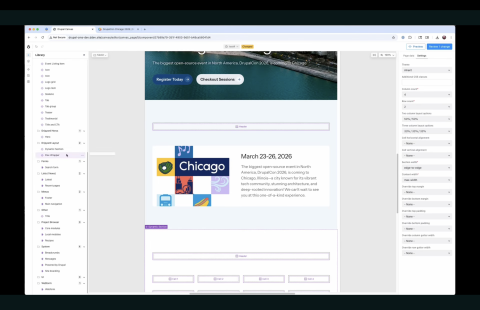Blog Header
Image

Congrats to the Drupal Canvas team!
Today marks a significant milestone for the Drupal community. Drupal project lead Dries Buytaert and the team behind Drupal Canvas have officially released version 1.0, and we couldn't be more excited...
Featured posts
-
A Christmas Message: Empowering Communities with AI for a Brighter Digital Future
-
The History of Drupal: From a Drop of Inspiration, to AI Digital Experience Platform
-
DXPR Builder AI Beta: When Drupal outperforms Elementor, Divi, Webflow, and the rest
-
2.7 "Baby AI" Is Here: DXPR Builder Delivers Free AI Writing to Every Drupal Site
-
Congrats to the Drupal Canvas team!